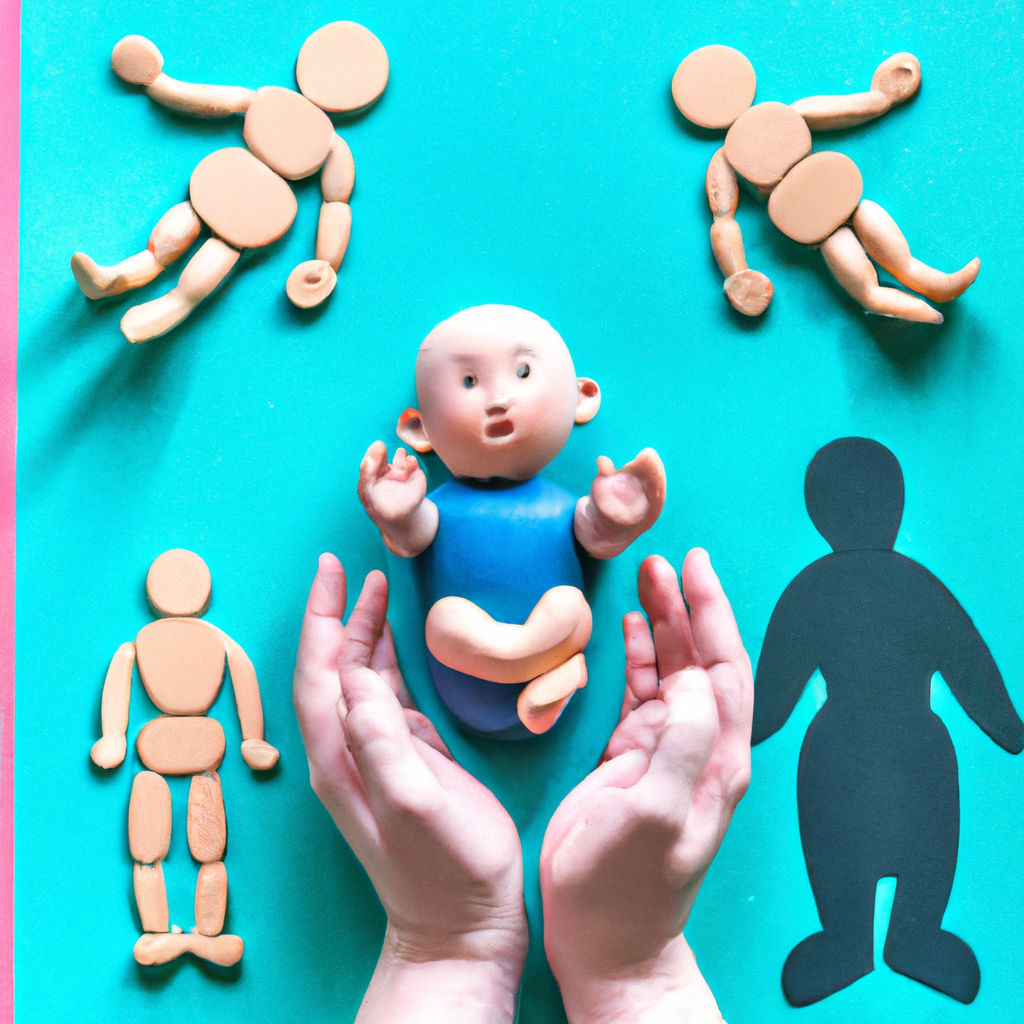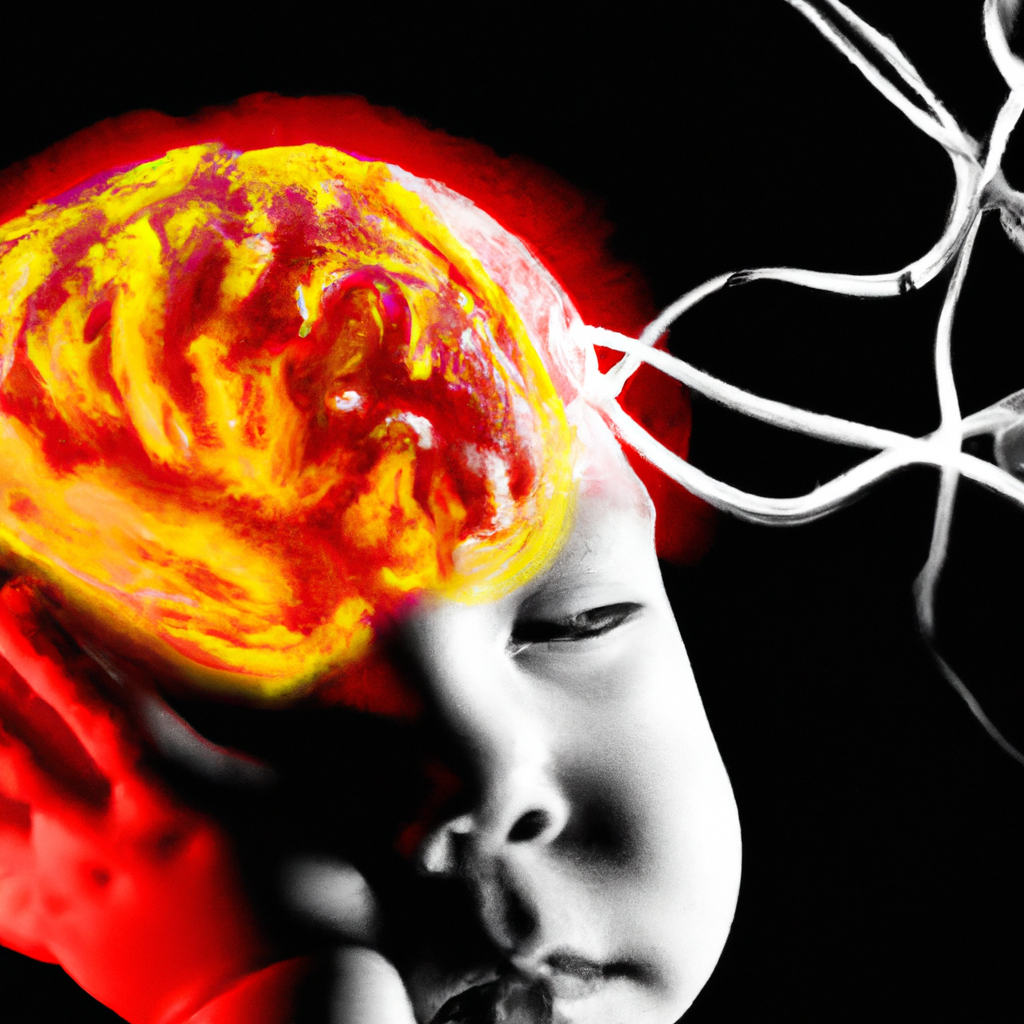As a person committed to researching child development, I have always been fascinated by the intricate roles that upbringing plays in molding a child’s growth.
Take the case of little Emma, for instance. Emma’s parents, through their warm and responsive parenting style, have fostered a secure attachment and a strong sense of self in her. This is just one example of the profound impact that nurturing experiences can have on a child’s overall development.
In this article, we will delve into the various aspects of nurture and how they influence a child’s growth and well-being.
Key Takeaways
- Parenting styles, such as authoritative parenting, have a significant impact on child development.
- High-quality early childhood education programs play a crucial role in cognitive, social, and emotional development.
- Peer relationships shape a child’s behavior, attitudes, and values, and contribute to their social and emotional development.
- Socioeconomic status can have a profound influence on a child’s opportunities and overall well-being, impacting their access to healthcare, education, and resources.
The Impact of Parenting Styles
Your parenting style directly influences your child’s development. The way you choose to discipline your child and your level of involvement in their life have a profound impact on their growth and well-being. Research consistently shows that an authoritative parenting style, characterized by setting clear boundaries and rules while being warm and responsive, leads to positive outcomes for children.
Discipline plays a pivotal role in shaping a child’s behavior and moral values. When discipline is consistent, fair, and based on reasoning, children learn self-control and understand the consequences of their actions. On the other hand, authoritarian and permissive parenting styles can have detrimental effects on a child’s development. Authoritarian parents, who enforce strict rules without considering their child’s perspective, may lead to feelings of resentment and rebellion. Permissive parents, who are overly lenient and lack discipline, may raise children who struggle with self-regulation and have difficulty following rules.
Parental involvement is another crucial aspect of child development. When parents are actively engaged in their child’s life, they provide a secure and nurturing environment. This involvement includes spending quality time together, participating in educational activities, and being emotionally available to the child. Studies consistently show that children with involved parents have better academic performance, social skills, and emotional well-being compared to those with less involved parents.
Understanding the impact of parenting styles and the role of discipline and parental involvement is essential. However, it is important to note that parenting is not the only factor that influences a child’s development. The role of early childhood education also plays a significant part in shaping a child’s cognitive, social, and emotional development.
The Role of Early Childhood Education
Early childhood education plays a crucial role in shaping a child’s development. Research has consistently shown that high-quality early education programs have long-lasting positive effects on children’s cognitive, social, and emotional development. One of the key benefits of play-based learning, which is often emphasized in early childhood education, is its ability to foster creativity, problem-solving skills, and social interactions. Through play, children learn to explore, take risks, and engage with their peers, all of which contribute to their overall development.
Furthermore, early intervention programs within the realm of early childhood education have proven to be particularly effective in supporting children with developmental delays or disabilities. These programs aim to identify and address potential challenges early on, allowing for timely interventions and increased chances of successful outcomes. By providing specialized support and individualized instruction, early intervention programs help children overcome developmental hurdles and reach their full potential.
Transitioning to the subsequent section about the influence of peer relationships, it is important to note that early childhood education also plays a significant role in fostering positive social interactions among children. Through interaction with peers, children learn important social skills such as sharing, cooperation, and empathy. These early experiences with peers lay the foundation for future relationships and social interactions throughout their lives.
The Influence of Peer Relationships
Transitioning to the influence of peer relationships, it’s important to recognize that children learn important social skills through interaction with their peers. Peer influence plays a significant role in shaping a child’s behavior, attitudes, and values. Here are four key ways in which peer relationships contribute to the development of social skills:
-
Socialization: Through peer interactions, children learn how to navigate social situations, such as taking turns, sharing, and resolving conflicts. These experiences teach them essential skills for building relationships and functioning in society.
-
Emotional Development: Interactions with peers provide opportunities for children to express and regulate their emotions. They learn empathy, understanding, and how to support others emotionally, fostering their emotional intelligence.
-
Communication Skills: Peer relationships provide a platform for practicing and refining communication skills. Children learn to express themselves, listen actively, and interpret nonverbal cues, enhancing their ability to connect and communicate effectively.
-
Self-Identity: Peer relationships play a crucial role in the development of self-identity. Through interactions with peers, children explore different roles, personalities, and interests, shaping their sense of self and fostering self-esteem.
Understanding the influence of peer relationships on social skills development is crucial for promoting healthy child development. As we explore the effects of socioeconomic status, we delve deeper into the factors that shape a child’s upbringing and experiences.
The Effects of Socioeconomic Status
When it comes to the effects of socioeconomic status, it’s important to consider how factors like income, education, and access to resources can shape a child’s opportunities and overall well-being. Socioeconomic disparities can have long-term effects on a child’s development, impacting their physical and mental health, educational achievements, and future prospects.
To understand the profound impact of socioeconomic disparities on child development, let’s take a closer look at some key aspects:
| Factors | Effects |
|---|---|
| Income | Limited access to quality healthcare, nutritious food, and safe living conditions. |
| Education | Lower educational attainment, limited access to quality schools and resources. |
| Resources | Lack of access to extracurricular activities, educational materials, and technology. |
Research consistently shows that children from low socioeconomic backgrounds face significant challenges throughout their lives. The long-term effects of these disparities can be seen in their health outcomes, earning potential, and overall quality of life.
Understanding the impact of socioeconomic status on child development highlights the importance of addressing these disparities and providing equal opportunities for all children. One crucial aspect that plays a significant role in mitigating the effects of socioeconomic disparities is emotional support. By focusing on emotional well-being and providing support systems, we can help children navigate the challenges they face and foster resilience and success in the face of adversity.
The Importance of Emotional Support
When it comes to child development, parental love and care play a crucial role. Research consistently shows that children who receive nurturing and affectionate care from their parents have better cognitive, emotional, and social outcomes.
Furthermore, secure attachment and bonding between parents and children have been found to be essential for healthy development, as they provide a sense of safety and security that fosters exploration and learning.
Additionally, emotional regulation skills, such as the ability to manage and express emotions in appropriate ways, are strongly influenced by the quality of parent-child relationships.
Parental Love and Care
Parental love and care greatly impact a child’s development. Research consistently demonstrates the importance of parental bonding and attachment in shaping a child’s emotional, social, and cognitive development. Attachment theory, pioneered by John Bowlby, emphasizes the significance of a secure emotional bond between a child and their primary caregiver. Secure attachment provides a foundation for healthy relationships and overall well-being throughout life.
Numerous studies have shown that children who experience secure attachment and bonding with their parents exhibit higher levels of self-esteem, empathy, and emotional regulation. They also tend to have better social skills, academic performance, and mental health outcomes. Additionally, secure attachment promotes a sense of security and resilience in children, allowing them to explore their environment and form healthy relationships with others.
Understanding the importance of parental love and care in child development lays the groundwork for exploring the next section on secure attachment and bonding. By examining the factors that contribute to secure attachment, we can further comprehend how parental influence shapes a child’s growth and development.
Secure Attachment and Bonding
To understand secure attachment and bonding, it’s essential for you to explore the factors that contribute to this strong emotional connection between a child and their primary caregiver.
Secure attachment refers to the healthy and positive bond formed between a child and their caregiver, which lays the foundation for the child’s emotional development and overall well-being.
Research has shown that secure attachment is influenced by various factors, such as consistent and responsive caregiving, emotional availability, and the quality of the caregiver-child relationship.
A strong bond between a child and their primary caregiver provides a secure base from which the child can explore the world, seek comfort in times of distress, and develop emotional regulation skills.
This secure attachment sets the stage for the child’s future relationships and emotional well-being, highlighting the importance of nurturing this connection.
Emotional Regulation Skills
You can enhance your emotional regulation skills by practicing mindfulness techniques and learning healthy coping strategies. Emotional regulation refers to the ability to manage and control one’s emotions in a healthy and adaptive way. Research has shown that individuals with strong emotional regulation skills tend to have better mental health outcomes and higher levels of well-being.
Mindfulness techniques, such as meditation and deep breathing exercises, can help individuals become more aware of their emotions and develop the ability to regulate them effectively. Additionally, learning healthy coping strategies, such as problem-solving and seeking social support, can provide individuals with alternative ways to manage and express their emotions.
By incorporating these emotional regulation techniques into daily life, individuals can develop greater emotional self-regulation and improve their overall well-being.
Cultural factors also play a significant role in shaping emotional regulation.
The Contribution of Cultural Factors
When examining the development of individuals, it’s crucial to consider the impact of cultural factors. Cultural influences play a significant role in shaping the way we think, behave, and perceive the world around us.
These factors, such as language, values, beliefs, and customs, can greatly impact various aspects of development, including cognitive, social, and emotional development.
Cultural Influences on Development
Cultural influences can shape a child’s development in significant ways. One of the key areas where cultural traditions have a major impact is language development.
Research has shown that the language a child is exposed to from an early age plays a crucial role in their linguistic abilities. Cultural traditions often dictate the languages spoken within a community or family, and this exposure to different languages has been found to enhance a child’s cognitive and linguistic skills. In fact, studies have demonstrated that bilingual children have better problem-solving abilities and higher levels of cognitive flexibility compared to monolingual children.
Additionally, cultural traditions also influence the social aspects of language development, such as the use of specific phrases, gestures, and intonations. These cultural influences on language development highlight the importance of considering cultural factors when examining child development as a whole.
Moving forward, it is essential to explore the broader impact of cultural factors on various aspects of a child’s development.
Impact of Cultural Factors
Language exposure plays a crucial role in a child’s linguistic abilities. Different languages enhance cognitive and linguistic skills. Cultural diversity and cultural norms heavily influence language exposure and shape a child’s development. Research has shown that children growing up in multicultural environments have a greater advantage in language acquisition and cognitive flexibility.
Exposure to multiple languages expands vocabulary and enhances problem-solving abilities and cognitive control. Cultural norms also play a significant role in the development of a child’s social and emotional skills. Cultural practices, such as communication styles, parenting approaches, and social interactions, shape a child’s understanding of the world and their ability to navigate social relationships.
As we explore the impact of cultural factors on child development, it is important to consider other aspects, like nutrition and health, that also contribute to a child’s overall development.
The Significance of Nutrition and Health
You should prioritize your child’s nutrition and health for optimal development. Nutrition plays a vital role in cognitive development, as it provides the necessary nutrients needed for brain growth and function. Research suggests that a well-balanced diet, rich in essential nutrients, can positively impact a child’s cognitive abilities, such as attention, memory, and problem-solving skills.
The role of exercise and physical activity in a child’s development should not be underestimated. Regular physical activity has been shown to enhance cognitive function and academic performance. Exercise increases blood flow to the brain, promoting the growth of new neurons and improving neural connections. Additionally, physical activity stimulates the release of endorphins, which can improve mood and reduce stress levels, ultimately benefiting cognitive development.
To ensure your child receives the necessary nutrition and physical activity, consider the following:
- Provide a variety of nutrient-dense foods in your child’s diet, including fruits, vegetables, whole grains, lean proteins, and dairy products.
- Limit the consumption of sugary snacks and beverages, as they can negatively impact cognitive function and contribute to obesity.
- Encourage regular physical activity through structured activities, such as sports or dance classes, as well as unstructured playtime.
Frequently Asked Questions
How Do Genetics Play a Role in Child Development?
Genetics play a crucial role in child development. The nature vs. nurture debate explores the influence of genetics and environment on a child’s development.
Researchers have found that genetics contribute to various aspects of a child’s physical and cognitive development, such as height, intelligence, and temperament. However, it is important to note that nurture, or the environment in which a child is raised, also plays a significant role in shaping their development.
It is the interplay between genetics and environment that truly determines a child’s overall development.
What Are the Long-Term Effects of Exposure to Violence or Trauma on a Child’s Development?
As I delve into the long-term effects of exposure to violence or trauma on a child’s development, I am reminded of the intricate web that nurture weaves in shaping who we become.
Emotional regulation, a cornerstone of healthy development, can be greatly impacted by such experiences.
Additionally, the cognitive development of these children may be affected, altering their ability to process information and make decisions.
Through research and evidence, we can gain a deeper understanding of the profound impact that violence and trauma can have on a child’s future.
How Does Technology and Screen Time Affect Child Development?
Excessive screen time and the rapid advancements in technology have significant effects on a child’s cognitive development. Research shows that prolonged exposure to screens can impair attention span, hinder language development, and disrupt sleep patterns.
Furthermore, excessive screen time has been linked to increased sedentary behavior, which can lead to obesity and other health issues.
It is crucial for parents and caregivers to set appropriate limits on screen time and provide alternative activities that promote physical, social, and intellectual development.
What Impact Does Sibling Order Have on a Child’s Development?
Sibling order can have a significant impact on a child’s development. Birth order effects have been widely studied and show that firstborns tend to be more responsible and achievement-oriented, while younger siblings may be more rebellious and outgoing.
Sibling rivalry is also a common occurrence, which can shape a child’s social and emotional development. Understanding these dynamics can help parents and caregivers create a nurturing environment that supports each child’s unique needs and fosters healthy sibling relationships.
How Do Different Parenting Styles and Practices Vary Across Cultures?
Cultural influences play a significant role in shaping different parenting styles and practices. Parental expectations vary across cultures, with some emphasizing discipline and obedience, while others prioritize independence and self-expression.
Research shows that these cultural variations can have a profound impact on child development. For example, children raised in collectivist cultures may exhibit higher levels of interdependence and conformity, while those in individualistic cultures may display greater autonomy and assertiveness.
Understanding these cultural nuances is crucial in providing effective support for children’s development.
Conclusion
In conclusion, it is undeniable that nurture plays a pivotal role in child development.
Like nurturing sunlight to a fragile seedling, a child’s growth is shaped by the warmth and care provided by parents, educators, peers, and society as a whole.
Just as a garden thrives when given the right nutrients, children flourish when provided with emotional support, quality education, and a nurturing environment.
This research-based evidence highlights the importance of fostering a positive and enriching environment for children, as it has a profound impact on their overall well-being and future success.









